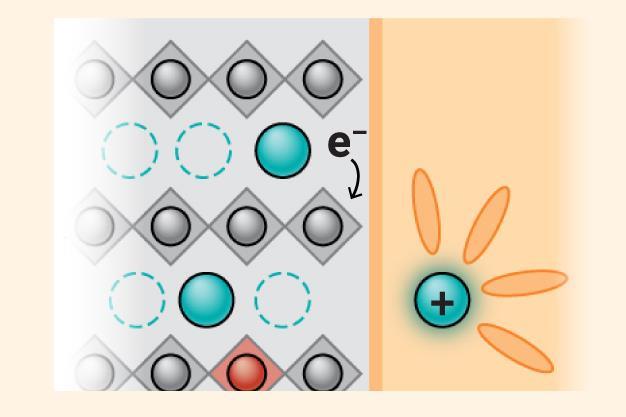- World Mental Health Day 2025: Let’s move? Gracie Gold and sister Carly Olympics.com
- For Olympian Anjum Moudgil, it’s all in the mind Times of India
- Beyond the Game: Rohit Sharma, Virat Kohli and the silent battle of mental health in sports
Author: admin
-
World Mental Health Day 2025: Let's move? Gracie Gold and sister Carly – Olympics.com
-

Gustaf Westman – inside the Instagram interiors sensation’s ‘chaotic’ world
Unlock the Editor’s Digest for free
Roula Khalaf, Editor of the FT, selects her favourite stories in this weekly newsletter.
You know you’ve arrived at Swedish designer Gustaf Westman’s studio-meets-testing ground when you see the three wide…
Continue Reading
-

Carsten Höller wants us to slap each other (for fun)
Unlock the Editor’s Digest for free
Roula Khalaf, Editor of the FT, selects her favourite stories in this weekly newsletter.
Art and play have a long and friendly relationship. The surrealists loved to play games; the French novelist Georges…
Continue Reading
-

Inside Charley Vezza’s surrealistic world of laugh-out-loud furniture
Unlock the Editor’s Digest for free
Roula Khalaf, Editor of the FT, selects her favourite stories in this weekly newsletter.
Italian companies are known for turning the dreams of creatives into reality. Our dreams are just a little more…
Continue Reading
-

KP on frontline in war against terrorism, says Barrister Saif
Adviser to the Chief Minister on Information, Barrister Muhammad Ali Saif, has said that Khyber Pakhtunkhwa (KP) remains on the frontline in Pakistan’s fight against terrorism.
In a statement issued on Friday, Barrister Saif emphasized that…
Continue Reading
-

Electron transfer plays an underappreciated role in battery charging cycles | Research
The charging and discharging rates of a wide range of lithium-ion batteries are better explained using model that accounts for both electron and lithium ion transfer, researchers in the US have shown. The findings, which show that ion transfer…
Continue Reading
-

Oil prices edge down as risk premium fades after Gaza deal
By Anna Hirtenstein
LONDON (Reuters) -Oil prices declined on Friday, after settling around 1.6% lower in the previous session, as the market’s risk premium faded after Israel and Hamas agreed to the first phase of a plan to end the war in Gaza.
Brent crude futures were down 16 cents, or 0.25%, at $65.06 a barrel at 0819 GMT. U.S. West Texas Intermediate crude was down 7 cents, or 0.11%, to $61.44.
“Finally having some kind of peace process in the Middle East is lowering the shoulders a little bit,” said Bjarne Schieldrop, chief commodities analyst at SEB. This could ease fears about crude carriers passing through the Suez Canal and the Red Sea, he said.
BOTH BENCHMARKS ON TRACK FOR WEEKLY GAINS
Israel and the Palestinian militant group Hamas signed a ceasefire agreement on Thursday in the first phase of U.S. President Donald Trump’s initiative to end the war in Gaza.
Under the deal, which Israel’s government ratified on Friday, fighting will cease, Israel will partially withdraw from Gaza, and Hamas will free all remaining hostages it captured in the attack that precipitated the war, in exchange for hundreds of prisoners held by Israel.
Numerous vessels have been attacked by the Iran-aligned Houthis in Yemen since 2023, targeting ships they deem linked to Israel in what they described as solidarity with Palestinians over the war in Gaza.
On a weekly basis, both crude benchmarks were on track to close in positive territory. Brent is up around 1% and WTI about 0.6% so far, after falling steeply last week.
Prices climbed about 1% on Wednesday to a one-week high because of stalled progress on a Ukraine peace deal, a sign that sanctions against Russia, the world’s second-largest oil exporter, could continue.
The Gaza ceasefire deal means the focus can move back to the impending oil surplus, as OPEC proceeds with the unwinding of production cuts, said Daniel Hynes, an analyst at ANZ.
A smaller-than-expected November hike in output agreed by the Organization of the Petroleum Exporting Countries and allies (OPEC+) on Sunday eased some of those oversupply concerns.
“Markets’ expectations for a sharp ramp up in crude supply have not manifested themselves in substantially lower prices,” BMI analysts said in a note on Friday.
“The most recent rise in production is lower than previously feared, contributing to a slight rise in prices for the week,” they said.
Investors are also worried that a prolonged U.S. government shutdown could dampen the American economy and hurt oil demand in the world’s largest crude consumer.
(Reporting by Anna Hirtenstein. Additional reporting by Sudarshan Varadhan. Editing by Christian Schmollinger and Mark Potter)
Continue Reading
-

How gymnastics stars Simone Biles, Suni Lee, Jordan Chiles and Jade Carey built a legacy beyond medals
U.S. gymnastics stars Simone Biles, Suni Lee, Jordan Chiles, and Jade Carey have been through it all.
They’ve supported each other in highs – like the Olympic Games Paris 2024, where Team USA took gold – and the lows – like the…
Continue Reading
-

China Monthly Tax Brief: September 2025
In this China Monthly Tax Brief for September 2025, we highlight key taxation developments relevant to individuals and businesses.
As China continues to refine its tax and regulatory landscape to support high-quality development, September saw a series of important updates with implications for foreign-invested enterprises. From enhanced compliance requirements for internet platforms to targeted fiscal incentives in Shanghai and Hainan, the month’s developments reflect a clear policy direction: strengthening governance, supporting strategic industries, and improving the business environment for both domestic and international stakeholders.
This issue covers:
- New enforcement rules for tax-related information reporting by internet platforms
- Shanghai’s upgraded funding policy for multinational headquarters
- Hainan’s multi-pronged tax incentives for talent, trade, and cross-border e-commerce
- A new application guide for China’s corporate sustainability disclosure standards
- Other updates including value-added tax (VAT) super deductions for integrated circuit (IC) enterprises, service export facilitation, and property tax adjustments in Shanghai
These changes offer both compliance challenges and strategic opportunities. Foreign investors are encouraged to stay informed and align their operations with evolving policy priorities to maximize benefits and mitigate risks.
China tightens tax compliance rules for internet platforms
On September 28, 2025, China’s State Taxation Administration (STA), Ministry of Industry and Information Technology (MIIT), and Cyberspace Administration (CAC) jointly issued Announcement No. 22. This announcement clarifies the administrative penalties for violations under the Regulations on Tax-Related Information Reporting by Internet Platform Enterprises (Order No. 810) and marks a significant step in strengthening tax oversight in the platform economy.
Grace period for corrections
The announcement provides a compliance buffer for internet platforms. If a company violates Article 10 of the regulations but corrects the issue within the deadline set by tax authorities, no penalty will be imposed. This mechanism encourages proactive remediation and offers a chance to avoid sanctions.
Definition of serious violations
The authorities have outlined specific behaviors that will be classified as “serious” if not corrected after receiving a rectification order. These include:
- Frequent violations: More than two instances of late, omitted, concealed, or false reporting within a year.
- Systematic misconduct: Guiding or assisting merchants on the platform to split income or misclassify revenue types.
- Data fabrication: Forging or altering tax-related data, or assisting others in doing so.
- Obstruction of law enforcement: Using violence or threats to refuse information submission.
Consequences of non-compliance
Platforms found to have committed serious violations may face suspension of business operations. During this period, the tax authorities will restrict the issuance of invoices, flag input invoices for risk, and publicly disclose the violations. These measures are designed to deter non-compliance and reinforce accountability.
Practical implications for platform operators
Find Business Support
The announcement sends a clear signal that tax compliance in the platform economy is under intensified scrutiny. Platform enterprises must establish robust internal controls to ensure accurate and timely reporting of tax-related information. Particular attention should be paid to avoiding technical or operational practices that help merchants manipulate income structures, as this is now explicitly categorized as a serious offense. Moreover, any rectification notice issued by tax authorities must be addressed immediately and thoroughly to prevent escalation.
This development reflects China’s broader effort to align digital business practices with national tax governance objectives. Foreign-invested platforms and investors should ensure their China operations are equipped to meet these evolving regulatory expectations, especially in terms of internal compliance systems and risk management protocols.
Shanghai upgrades headquarters funding policy to empower multinational corporations
To accelerate the development of its headquarters economy, Shanghai has revised its funding policy for multinational corporations. On August 27, 2025, the Shanghai Municipal Commission of Commerce and the Municipal Bureau of Finance jointly issued the updated Measures for the Administration of Development Funds for Regional Headquarters of Multinational Corporations (Hu Shang Gui [2025] No. 3). Effective from September 1, 2025, the new measures replace the 2024 version and will remain valid until August 31, 2030.
Policy shifts toward project-based support and functional upgrades
The revised measures expand the scope of fiscal support from corporate entities to specific projects, signaling a more flexible and pragmatic approach. While maintaining compliance and creditworthiness as prerequisites, the policy simplifies application requirements and introduces targeted incentives to encourage functional clustering and capability enhancement.
Five categories of financial support
The new framework offers support across five categories: early-stage funding, capability enhancement rewards, functional rewards, innovation platform incentives, and capital increase bonuses.
Support Category Eligible Projects Core Requirements Support Amount Early-stage support funding Regional HQ or business division HQ Paid-in capital ≥ US$30 million; ≥ 10 employees; manages at least one domestic or overseas entity across different countries/regions RMB 5 million (disbursed over 3 years: 40%, 30%, 30%) Global R&D center ≥ 50 full-time R&D personnel RMB 5 million (same disbursement schedule) Capability enhancement reward Asia-Pacific or higher-level HQ or business division HQ Manages ≥ 3 overseas entities; performs ≥ 2 core functions (e.g. R&D, treasury, investment, procurement, supply chain, shared services); paid-in capital ≥ US$2 million; ≥ 50 employees; senior executive stationed in Shanghai RMB 3 million (one-time reward) Regional HQ or business division HQ upgraded to global division HQ Annual revenue ≥ RMB 1 billion, accounting for ≥ 10% of global division revenue; paid-in capital ≥ US$30 million; ≥ 80 global business staff; senior executive stationed in Shanghai RMB 10 million (one-time reward) Functional reward Regional HQ or business division HQ with new R&D function Average annual R&D investment ≥ US$4 million over past 2 years; ≥ 40 full-time R&D staff; holds authorized Chinese invention patents RMB 3 million (one-time reward) New treasury function Operational for ≥ 1 year; annual cross-border cash pool flow ≥ RMB 3.5 billion with positive net movement RMB 3 million (one-time reward) New procurement/distribution function Paid-in capital ≥ US$2 million; annual sales ≥ RMB 1 billion RMB 5 million (disbursed over 3 years: 40%, 30%, 30%) Innovation platform reward Open innovation platform ≥ 5 full-time staff in tech, operations, or management; ≥ 5 successfully signed incubation projects RMB 3 million (one-time reward) Capital increase reward Investment in encouraged industrial projects via capital increase Annual new actual foreign investment ≥ US$30 million RMB 2 million (one-time reward) Application and compliance requirements
Applicants must have operated continuously for at least one year, maintain good credit standing, and submit foreign investment enterprise reports as required. Duplicate applications for similar funding are prohibited, and applicants are responsible for the accuracy and completeness of their submissions.
Strategic implications for FIEs
Find Business Support
The revised policy reflects Shanghai’s ambition to attract and retain high-value multinational operations. Enterprises are encouraged to align their strategic planning with the new funding criteria, assess their current headquarters classification, and explore opportunities to upgrade to global status. Given the emphasis on core functions such as R&D, treasury, and procurement, companies should evaluate their operational strengths and consider targeted enhancements to unlock policy benefits.
Early preparation is key. Eligible firms should study the application guidelines, understand the documentation requirements, and plan the use of funds in line with fiscal performance standards to maximize impact.
Hainan introduces tax and regulatory incentives to attract talent and boost trade
Hainan Free Trade Port (FTP) has unveiled a series of tax and regulatory measures aimed at enhancing its appeal to high-end talent, creative industries, and cross-border e-commerce enterprises. These initiatives reflect the province’s broader strategy to build a globally competitive business environment under the Hainan FTP framework.
Individual income tax relief for high-end and urgently needed talent
Effective January 1, 2025, Hainan refined its preferential individual income tax (IIT) treatment to qualified high-end and urgently needed professionals working in the FTP. Under Announcement No. 24, individuals whose effective tax burden exceeds 15 percent will be exempted from the excess portion, provided their income is sourced from and taxed in Hainan.
The policy covers comprehensive income (such as wages, royalties, and labor services), business income, and government-recognized talent subsidies. To qualify, individuals must reside in Hainan for at least 183 days annually, with flexible provisions for those in industries like aviation and offshore energy. Eligibility is determined through annual talent rosters compiled by HR and tax authorities, with additional application channels for special sectors. Compliance is closely monitored, and false declarations may result in disqualification and penalties.
Cultural development fee exemption for advertising and entertainment services
In a complementary move to reduce business costs, the Hainan provincial government announced that, starting October 1, 2025, advertising and entertainment service providers in the FTP will be exempt from paying the local portion of the cultural development fee. This exemption does not apply to Sansha City, which will continue to follow the existing policy of halved fees for both local and central portions.
The exemption applies to fees incurred from October 1 onward and is currently open-ended. For services with mixed investment structures, the local portion is fully exempt, while the central portion is subject to a 50 percent reduction under national rules (Caishui [2025] No.7).
Duty-free policy for processing value-added goods
Find Business Support
On September 22, 2025, Haikou Customs released implementation guidelines for the duty-free policy on processing value-added goods in the FTP. Once the customs closure operation officially begins, enterprises using imported materials—including zero-tariff and bonded goods—can apply for duty exemption on the value-added portion of processed products.
Enterprises must first file with the Hainan Department of Commerce via the China (Hainan) International Trade “Single Window.” After approval, they must declare the processing value-added before transporting finished goods to the Chinese mainland. This policy is expected to significantly reduce costs for manufacturers and enhance the competitiveness of Hainan-based supply chains.
Tax and foreign exchange optimization for cross-border e-commerce
On September 7, 2025, the Hainan Provincial Government issued an implementation plan for the China (Hainan) Comprehensive Pilot Zone for Cross-Border E-Commerce. Key highlights include:
- A trial corporate income tax assessment method for qualified retail export enterprises, applying a unified taxable income rate of 4 percent.
- Support for offsetting overseas warehousing, logistics, and tax expenses against export payments.
- Permission for domestic individuals engaged in cross-border e-commerce to conduct foreign exchange settlements through personal accounts.
- Simplified procedures for foreign exchange receipt and payment for enterprises with strong credit records.
These measures aim to streamline operations, reduce tax burdens, and enhance financial flexibility for cross-border e-commerce businesses operating within the pilot zone.
Strategic outlook
Together, these policies signal Hainan’s commitment to building a dynamic, talent-driven, and trade-friendly economy. Foreign investors and enterprises operating in the FTP should assess their eligibility for these incentives and align their operations with Hainan’s evolving regulatory framework to maximize strategic and financial benefits.
Read also: Hainan Free Trade Port: Tax, Customs, and Industry Incentives for Foreign Investors
China releases application guide for corporate sustainability disclosure standards
In a significant step toward standardizing sustainability reporting, China’s Ministry of Finance, in collaboration with multiple government agencies, released the Application Guide for the Corporate Sustainability Disclosure Standards – Basic Standards (Trial) in September 2025. This guide refines and operationalizes the Basic Standards issued in November 2024 and is currently voluntary for enterprises to adopt.
A practical framework for ESG-aligned disclosure
The guide provides a structured methodology for enterprises to identify the scope of their value chains, assess the materiality of sustainability-related information, and link financial and non-financial data. It also outlines how to disclose the current and expected financial impacts of sustainability risks and opportunities. These disclosures aim to help investors, creditors, and other stakeholders better evaluate a company’s long-term value and risk profile.
Key components of the guide include:
- Value chain definition: Enterprises are advised to determine the scope of their value chain based on the relevance of sustainability information to decision-makers. The guide allows flexibility through the “proportionality principle,” especially for SMEs.
- Materiality assessment: A four-step process is recommended, including identifying initial topics, evaluating sustainability risks and opportunities, assessing sustainability impacts, and compiling the sustainability report. The guide emphasizes consistency with financial reporting standards when assessing current financial impacts.
- Information linkage: The guide explains how to associate sustainability data with financial statements, including both quantitative and narrative elements. This helps present a cohesive picture of enterprise performance and strategic direction.
- User-centric disclosure: Investors and creditors are defined as the primary users of sustainability information. The guide also addresses the needs of regulators, business partners, and social stakeholders, encouraging tailored disclosures to meet diverse decision-making requirements.
- Scenario analysis and resilience: Enterprises are encouraged to use scenario analysis to evaluate the resilience of their strategies and business models against sustainability risks.
- Disclosure of sustainability impacts: Companies should report both actual and foreseeable impacts, positive or negative, on the economy, society, and environment, separate from risk and opportunity disclosures.
Strategic implications
The release of the application guide marks a transition from framework-building to implementation in China’s sustainability disclosure regime. It reflects a growing emphasis on ESG integration, transparency, and long-term value creation. FIEs operating in China should consider aligning their internal reporting systems with the guide’s principles to enhance stakeholder trust and prepare for potential future mandates.
Other tax updates in September
Find Business Support
- Vehicle purchase tax exemption expanded for special-purpose vehicles: The 19th batch of the Catalogue of Non-Transport Special-Purpose Vehicles with Fixed Equipment Exempt from Vehicle Purchase Tax has been jointly released by the State Taxation Administration and the Ministry of Industry and Information Technology. It covers 638 models from 215 manufacturers. To enjoy the exemption, vehicle producers must mark the “tax-exempt” label in the electronic vehicle information system after the model is listed in the catalogue. Buyers can then apply for exemption using this label, along with other required documents. For vehicles purchased before the catalogue release, exemption or refund may still be possible if the label is added retroactively.
- IC enterprises begin application for VAT super deduction list: The annual application process for IC enterprises to be included in the VAT super deduction list has commenced. Eligible companies—including those engaged in IC design, manufacturing, packaging, equipment, and materials—must submit online and paper applications during two windows: September 25–30 and October 9–14. Results will be available after November 30. Approved enterprises can enjoy the super deduction policy from January 1, 2025, with retroactive claims allowed for the current year.
- New tax and regulatory measures to promote service exports: On September 22, 2025, the Ministry of Commerce and eight other departments jointly issued a policy document to support service exports. Key tax-related measures include streamlining export tax rebate procedures and encouraging the use of electronic documentation. The policy also enhances bonded support for R&D and testing activities in comprehensive bonded zones and pilots the extension of bonded policies to certain off-zone testing services. Additional measures, such as financial guidance and cross-border settlement facilitation, aim to enhance the overall tax environment for service exporters, particularly in the digital and green sectors.
- Tax support for state-owned equity transfer to social security funds clarified: The Ministry of Finance and the STA have issued Caishui [2025] No. 26, detailing tax policies for the transfer of state-owned equity and cash income to social security funds. Effective from April 1, 2024, the circular exempts VAT on loan interest and financial product income earned by receiving entities, classifies income from equity and cash transfers as non-taxable for corporate income tax purposes, and waives stamp duty on transfers of non-listed equity. For listed equity and securities transactions, stamp duty is refunded after collection. The policy applies to the National Council for Social Security Fund and designated provincial entities, with refunds available for eligible taxes paid before the notice.
- Shanghai adjusts personal housing property tax pilot policy: On September 16, 2025, Shanghai’s finance and tax authorities issued a notice (Hu Caifa [2025] No. 5) optimizing the city’s personal housing property tax pilot. The key change expands exemptions for certain groups: high-level and urgently needed talent with Shanghai residence permits, and permit holders who have lived and worked in the city for over three years, are exempt from property tax on newly purchased first homes. For second homes, exemptions apply to the portion of housing area below 60 square meters per capita. Those with residence permits for less than three years will be taxed under current rules, but may apply for refunds once they meet the three-year threshold. The policy is retroactive to January 1, 2025.
- New management accounting guidelines released: To advance the application of management accounting, the Ministry of Finance issued two new guidelines in September 2025: Guideline No. 305 – Life Cycle Costing and Guideline No. 406 – Benchmarking Management. The life cycle costing guideline helps enterprises manage total costs across the lifespan of products, assets, labor, projects, and services. The benchmarking guideline provides methodologies for internal and external comparisons to identify performance gaps and develop improvement strategies. These tools aim to enhance cost control and operational efficiency.
About Us
China Briefing is one of five regional Asia Briefing publications. It is supported by Dezan Shira & Associates, a pan-Asia, multi-disciplinary professional services firm that assists foreign investors throughout Asia, including through offices in Beijing, Tianjin, Dalian, Qingdao, Shanghai, Hangzhou, Ningbo, Suzhou, Guangzhou, Haikou, Zhongshan, Shenzhen, and Hong Kong in China. Dezan Shira & Associates also maintains offices or has alliance partners assisting foreign investors in Vietnam, Indonesia, Singapore, India, Malaysia, Mongolia, Dubai (UAE), Japan, South Korea, Nepal, The Philippines, Sri Lanka, Thailand, Italy, Germany, Bangladesh, Australia, United States, and United Kingdom and Ireland.
For a complimentary subscription to China Briefing’s content products, please click here. For support with establishing a business in China or for assistance in analyzing and entering markets, please contact the firm at china@dezshira.com or visit our website at www.dezshira.com.
Continue Reading
-

Cardiovascular risk assessment tools in the Middle East: A scoping rev
Introduction
Cardiovascular diseases (CVDs), the primary cause of mortality, disability, and reduced quality of life globally, have become the most important medical problem in the last few decades. Worldwide, the age-standardized…
Continue Reading
